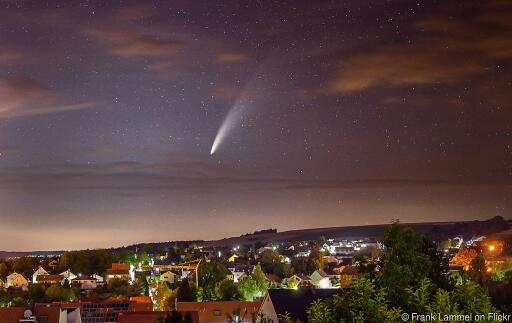Bringing the cradle of the solar system to the laboratory

Experts often call comets a window into the time when our solar system was born. But there are indications that they may even contain matter that is significantly older, as the comet researcher Günter Kargl reports: "During the Rosetta comet mission, the scientists found grains of dust that are over 4.5 billion years old. You won't find material that old in planets." Kargl notes that in some cases the dust in comets, where it is preserved as in a time capsule, is a billion years older than the oldest rocks found on Earth.
It is the mission of space probes such as Rosetta, which paid a visit to the comet Churyumov-Gerasimenko in 2014 and followed it for two years, to track down these ancient materials. But even after the success of the Rosetta mission, which provided a great deal of new data, the structure and behaviour of comets are still not properly understood. "Some of the measured results obtained on Rosetta were confusing for the researchers," explains Kargl, "because there were certain behavioural patterns on the surface they didn't expect to find." Now it's a matter of analysing the deviations and adapting the models and theories of comet formation to these findings.
New laboratory tests
"It takes a three-pronged approach to understand comets: measured data from comet emissions, mathematical simulations, and laboratory experiments," Kargl notes. But the laboratory experiments that helped prepare Rosetta need to be updated based on the mission results. "When new questions kept coming up during the presentation of Rosetta results, I talked to colleagues about the need to set up a new laboratory programme, using methods from the 2000s, with better measurement technology." Kargl then initiated a cooperation project between research institutions from Germany, Austria and Switzerland. Kargl is the principal investigator of the Austrian part, which is funded by the Austrian Science Fund FWF.
The new project caught the attention of the international scientific community and interest in it has literally exploded in the meantime, says Kargl. "The German Aerospace Center in Berlin has joined in together with the Max Planck Institute for Solar System Research in Göttingen, but also the Chinese Academy of Science and Technology." All these institutions are involved at their own expense and also contribute equipment.
Like cigarette ash
According to Günter Kargl, laboratory experiments with comet material present several challenges: "Inevitably one does not use material in the laboratory that comes from comets, so one has to look for comparable materials. These do not need to be perfect surrogates, but must show similar behaviour for certain processes." This is all the more difficult because the consistency of the material can vary greatly. "Fresh or very dry material from comets can be almost as loose-textured as cigarette ash. But heat and other processes can compact it into something as solid as concrete. The range is incredibly large," the researcher explains.
One of the objectives of the project is to develop a standard for other laboratory experiments with comet material, because at present the results obtained by different teams are not comparable. "We want to create a standard here. For Mars and the Moon, NASA has ensured that certain standards are in place", says Kargl. This means that when a laboratory wants to investigate conditions on Mars, it can fall back on guidelines as to what properties Mars material should have. "For comets, this does not yet exist. This is a gap we would like to close," says the researcher.
The limits of physics
The project has been running for two years, and its roadmap foresees providing a basis with smaller experiments and preparing a handful of larger experiments to be carried out in a large vacuum chamber made available by the project partners at the Institute of Geophysics and Extra-terrestrial Physics at the Technical University Braunschweig. Many smaller experiments have already been carried out and have provided some interesting results. "With an experiment in Graz, we have made an advance into an area where we have reached the limits of physics. It is about the gas flow through porous comet materials," the researcher reports. Currently there are two different physical models to describe such behaviour, but neither of them simulates the situation satisfactorily. "Both models collapse in this area," Kargl notes. In this context, the experiment provides data that is also of interest outside the actual field of research.
Günter Kargl and his team also have the task of building a penetrometer. This is a probe that is to be installed in the vacuum chamber in Braunschweig. It will be driven into the ice to measure its strength. Kargl and a team have already built such a penetrometer for Rosetta. "We are among the few who have any experience in this field," says Kargl.
Corona as an obstacle
Right now, the corona crisis is causing unusual complications. Some of the experiments are therefore being adapted so that research groups from other countries can access and control them online. The project itself is not jeopardised by the situation; the first large-scale experiment in the Braunschweig vacuum chamber will soon be ready to run for several weeks.
With "Neowise", which was only recently discovered, there is currently a new comet visible to the naked eye in the night sky. It is still not exactly clear how and why gas and dust escape from the comet to form its typical, spectacular tail. But new findings may soon deepen our understanding of these old celestial bodies.
